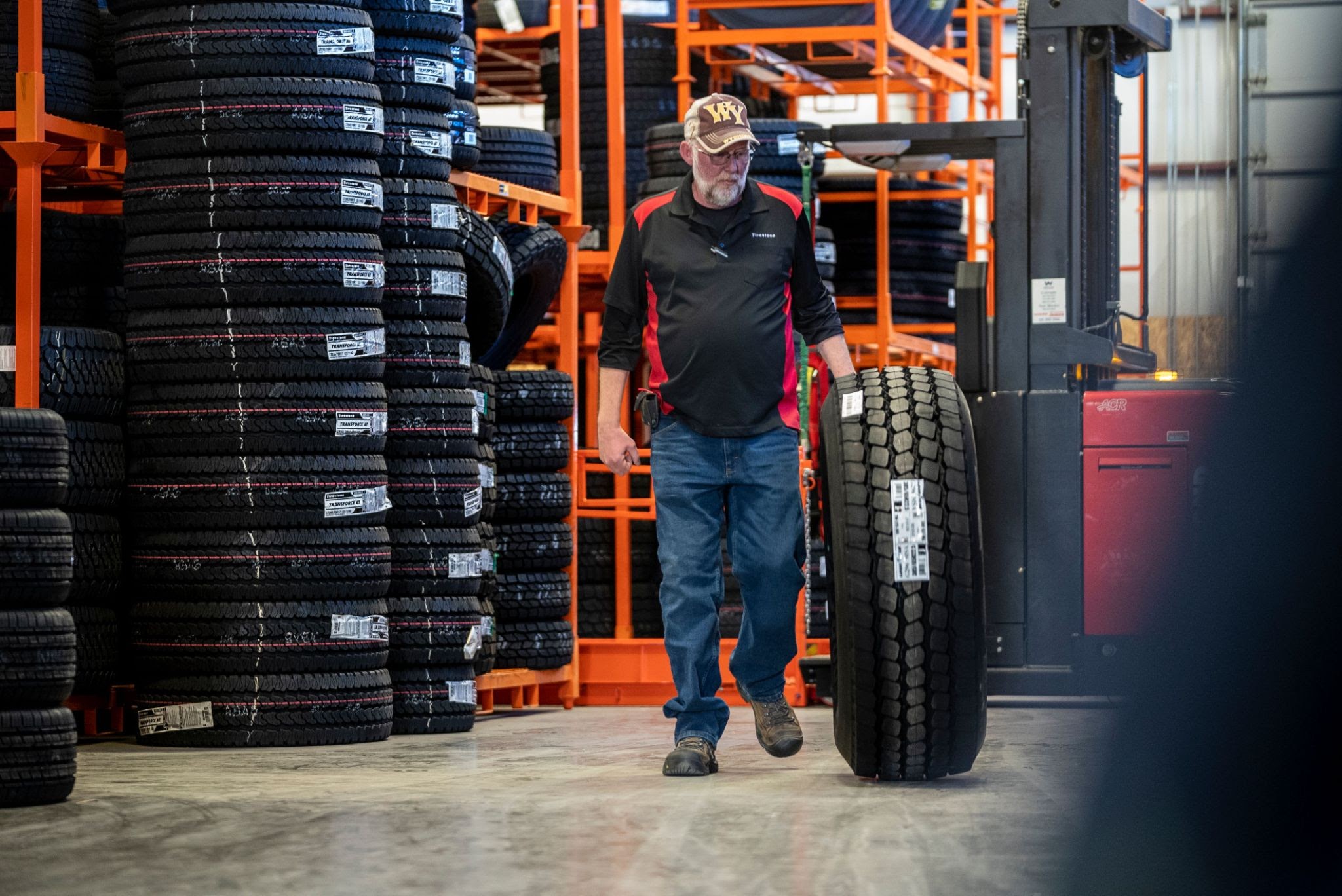The Scientific Research Behind Tire Repair and Safety
When it involves the detailed world of tire maintenance and safety and security, there exists a world of science that frequently stays undetected by the ordinary vehicle driver - morris tire. The products that make up a tire, the influence of tire stress on total security, the effects of tread wear, the elaborate dynamics of tire traction, and the often-overlooked relevance of appropriate wheel positioning all play essential roles in making certain a car operates safely and efficiently. As we browse through the intricacies of tire fixing and safety and security, it becomes apparent that a deeper understanding of these scientific concepts is not only helpful yet essential for every single chauffeur on the road
Tire Make-up and Functionality
What products comprise the composition of tires, and just how do these components add to their functionality when driving? Tires are complex products, normally made from a mix of rubber compounds, fabric, steel cables, and other chemical additives. One of the most common type of rubber used in tires is synthetic rubber, which supplies sturdiness and resistance to deterioration. The fabric layers, often made of rayon, polyester, or nylon, supply strength and security to the tire structure. Steel cords are integrated to improve the tire's strength and help it keep its shape under different road problems.
The rubber substances supply hold and traction, permitting the tire to adhere to the road surface area and supply security during acceleration, braking, and cornering. On the whole, the careful choice and combination of these products ensure that tires can do successfully and securely on various road surfaces and problems.
Influence of Tire Stress on Security
Maintaining proper tire stress is necessary for ensuring optimum safety and security and efficiency while driving. The effect of tire stress on safety can not be overstated. Underinflated tires are prone to getting too hot, which can cause tire blowouts, specifically at broadband. In addition, reduced tire pressure affects the handling and responsiveness of the vehicle, enhancing the danger of accidents, especially throughout emergency situation maneuvers. On the various other hand, overinflated tires have much less contact with the road surface area, minimizing traction and causing uneven endure the tire footsteps. This jeopardizes the vehicle's security and stopping efficiency, presenting a considerable safety and security danger. Appropriately filled with air tires likewise play an essential duty in fuel effectiveness, as underinflated tires can boost rolling resistance, causing decreased gas mileage. Routinely examining and preserving the proper tire stress not just ensures safety yet additionally extends the lifespan of the tires, reducing substitute expenses in the long run.
Footstep Put On and Its Implications
Correct tracking of tire tread wear is critical for ensuring optimum performance and safety and security when driving. As tires use down, the depth of the tread reduces, lowering the tire's capability to maintain grip, particularly in unsafe or wet conditions. The step pattern and depth play an essential role in funneling water away from the tire to avoid hydroplaning and preserving hold on the roadway surface area.
Indicators of excessive walk wear include like it hairless places, uneven wear, and the appearance of wear signs. Bald places indicate local wear, which can cause instability and boosted threat of blowouts. Unequal wear may suggest concerns with tire inflation, positioning, or suspension components. Wear signs are constructed right into the tire walk and end up being visible when the step deepness reaches a specific nadir, indicating the requirement for immediate substitute.

Understanding Tire Traction Characteristics
Checking tire step wear not only makes certain optimal efficiency and safety but likewise straight impacts the grip dynamics of the tires on various roadway surfaces. Tire traction is a vital aspect of lorry handling and security, as it determines the grip in between the tires and the roadway. Traction characteristics differ relying on roadway problems such as completely dry pavement, damp roads, snow, or ice.

Understanding tire grip dynamics is vital for motorists to adjust their driving habits according to the roadway problems. discount tires morris il. On a regular basis examining tire step depth and condition can substantially improve grip efficiency, guaranteeing much safer driving experiences throughout various surface areas
Importance of Appropriate Wheel Positioning
Guaranteeing proper wheel positioning plays a crucial role in optimizing vehicle efficiency and extending tire long life. Appropriate wheel placement entails adjusting the angles of the wheels to supplier specifications, ensuring that they are vertical to the ground and alongside each various other. When positioning is off, it can result in unequal tire wear, decreased fuel performance, and jeopardized handling.
One of the essential benefits of maintaining proper wheel placement is improved dealing with and stability. Misaligned wheels can create the vehicle to draw to one side, affecting steering control and overall driving experience. Additionally, appropriate placement advertises even tire wear, preventing premature tire substitute and minimizing maintenance prices in the long run.

Verdict
Finally, the scientific research behind tire fixing and safety is vital for preserving vehicle performance and making certain driver security. By comprehending tire make-up, stress, walk wear, grip characteristics, and wheel placement, motorists can prevent crashes and extend the lifespan morris tire service of their tires. Correct upkeep and routine evaluations are essential for optimal tire efficiency and general car safety. By following these standards, drivers can drive with confidence recognizing that their tires are in excellent condition.
The materials that make up a tire, the influence of tire pressure on total security, the implications of tread wear, the elaborate characteristics of tire traction, and the often-overlooked significance of appropriate wheel alignment all play essential duties in guaranteeing an automobile runs safely and successfully. On the various other hand, overinflated tires have much less contact with the road surface, decreasing traction and causing uneven wear on the tire footsteps. Regularly checking and keeping the appropriate tire pressure not only ensures security but also expands the life-span of the tires, conserving on substitute prices in the lengthy run.
Checking tire tread wear not just guarantees optimal efficiency and safety and security yet additionally directly affects the traction dynamics of the tires on various roadway surfaces. Tire traction is a vital element of car handling and safety and security, as it figures out the grip in between the tires and the road.
 Jonathan Taylor Thomas Then & Now!
Jonathan Taylor Thomas Then & Now! Rider Strong Then & Now!
Rider Strong Then & Now! Hallie Eisenberg Then & Now!
Hallie Eisenberg Then & Now! Danny Pintauro Then & Now!
Danny Pintauro Then & Now! Peter Billingsley Then & Now!
Peter Billingsley Then & Now!